Wonderfully luscious and creamy lemon curd made using whole eggs. A great no-waste lemon curd for when you don’t have a use for left-over egg whites.
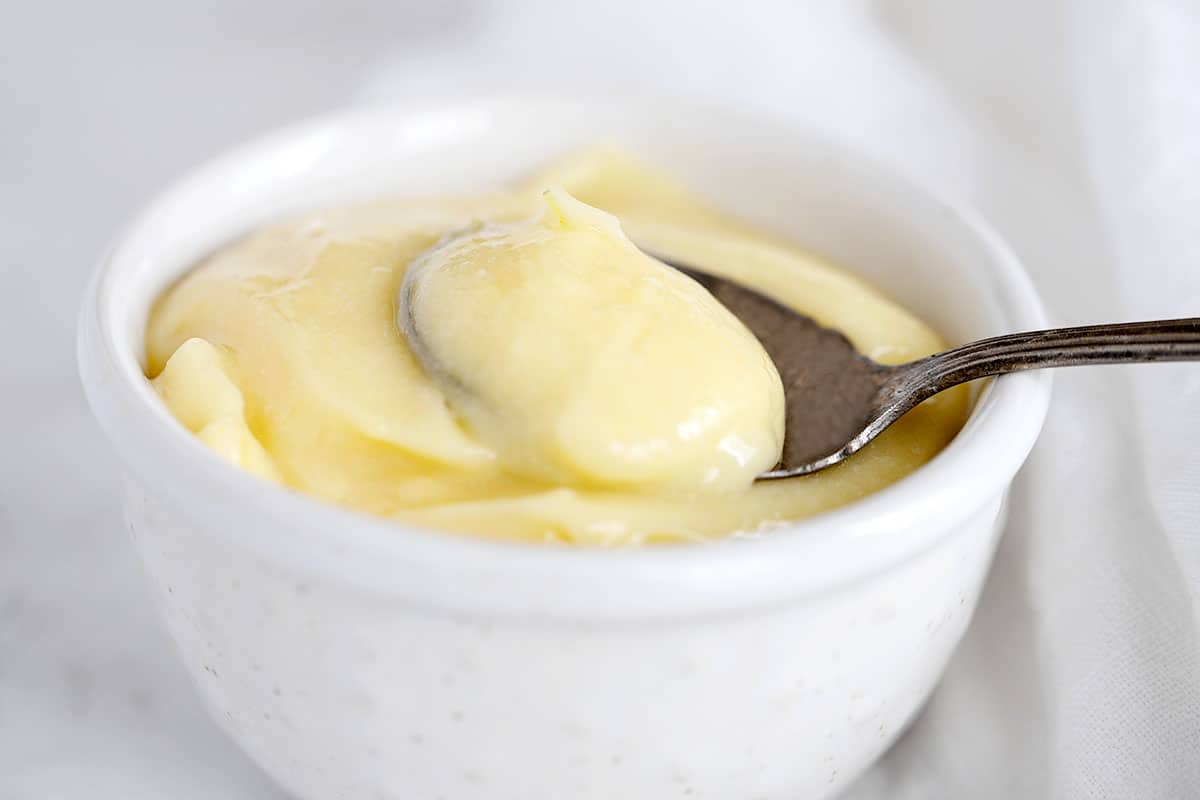
Whole egg lemon curd is wonderfully luscious and creamy, making it perfect to use in so many ways. It’s wonderful to have on hand and it keeps well in the fridge or freezer.
Whole egg lemon curd means no wasting egg whites! I also love that you can easily adjust the sugar amount, for a sweeter or more tart lemon curd, depending on how you prefer it or how you plan to use it.
Ingredients and substitutions
A few notes about the key ingredients …
Lemon Juice and Zest– as this recipe uses both lemon juice and lemon zest, you’ll need to start with fresh lemons. Fresh lemons will always give you the best and freshest lemon flavour. You will need 2 large or 3 small lemons for the base recipe.
White Granulated Sugar – you can tweak the added sugar in the lemon curd to tailor the sweetness or tartness to you taste or how you plan to use it. Details are provided in the Recipe Card for suggested adjustments.
Eggs – you’ll need 3 large eggs and you’ll be using the whole egg, so no need to separate the eggs at all.
Butter – the butter will be stirred in at the end of the cooking process and will be done off-heat and creates a wonderfully smooth and glossy curd. You can use salted or unsalted butter here, as you like. If using unsalted, you can add a pinch of salt when adding the butter.
If you prefer not to use butter, you can omit, though the texture of the finished lemon curd will be less smooth and not as shiny. It will still taste delicious, though :)
How to make whole egg lemon curd
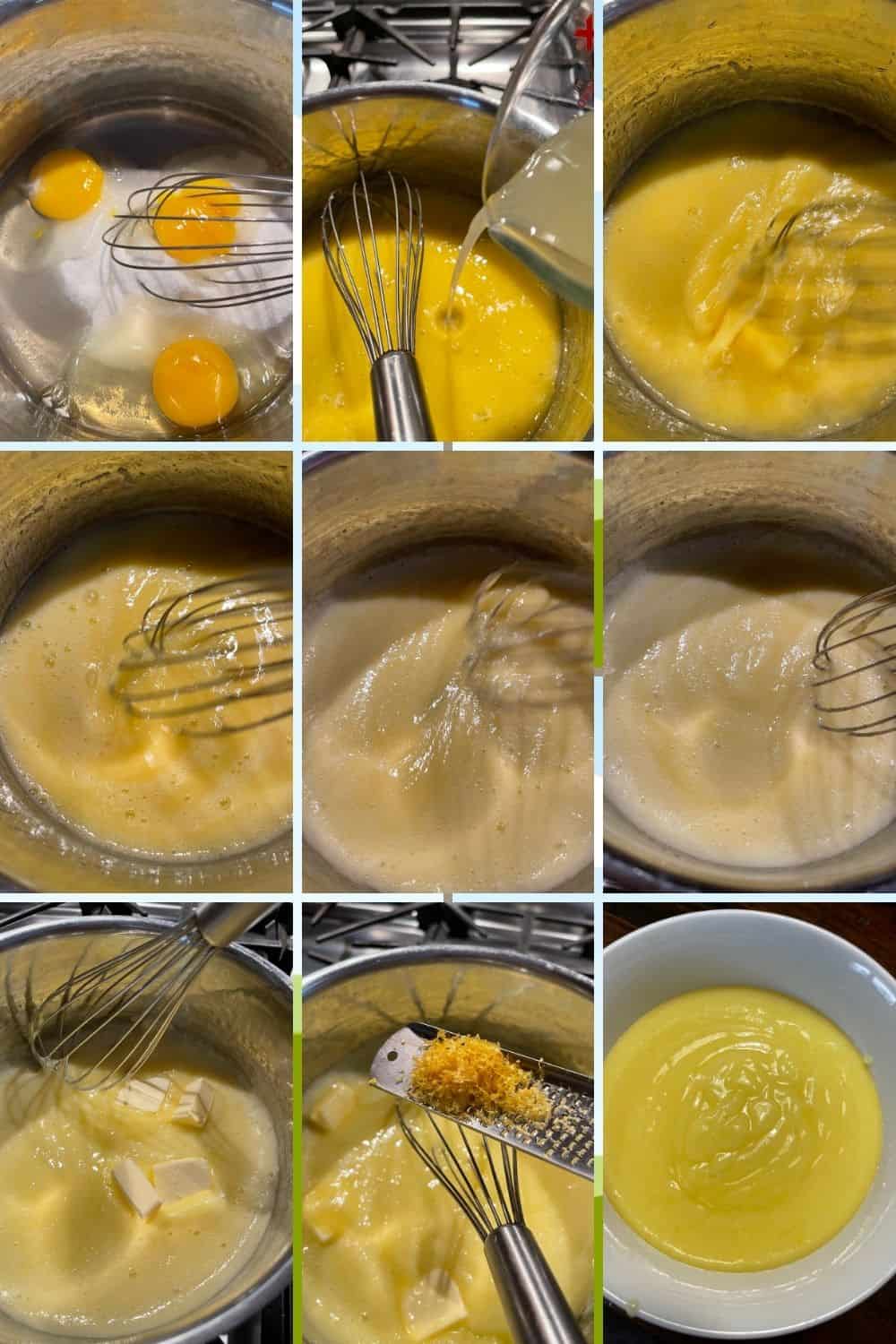
- Start by whisking together the eggs and sugar in a saucepan. It’s important to whisk together the eggs and sugar before adding the lemon juice, to avoid curdling the eggs.
- Add the lemon juice and whisk well to combine.
- Turn the heat on under the saucepan, setting it just below medium (between medium and medium low).
- Cook the mixture, whisking continuously, until the mixture thickens. That will happen when the mixture reaches about 170F, or just below the point where it would start to simmer. So never let the curd boil!
- Remove from the heat and whisk in the butter and lemon zest.
- Allow to cool slightly, then cover and refrigerate.
Recipe tips!
- Whisk continuously and never let the lemon curd boil! Whisking continuously ensures a smooth lemon curd, but it also allows you to continuously monitor the thickening of the curd. The lemon curd will thicken when it reaches about 170F, or just below when it would start to simmer (bubbles breaking the surface). When lemon curd start to simmer and boil, the egg will cook and create white chunks in the curd.
- If your lemon curd breaks and becomes lumpy, whisk vigorously to break up us much as you can and then strain through a fine-mesh strainer to remove any remaining pieces. The remaining curd is perfectly fine to use.
- Don’t use an aluminum or copper-lined saucepan to make lemon curd or your lemon curd may turn green!
Adjusting the sweetness of the lemon curd
You can adjust the sweetness of the lemon curd, depending on how you plan to use the lemon curd. If using in a tart or as a dollop with cake, for example, use as written.
For a more tart lemon curd, when used as a filling or when you want the lemon curd to be more pronounced when competing with other flavours, reduce the sugar to 3/4 cups (for the base 1X recipe). Everything else stays the same and the curd will set up exactly the same, it will just be more or less tart.
Uses for lemon curd
- Use as a filling for layer cakes or crepes.
- Spoon into baked tart shells and top with meringue or whipped cream
- Add dollops on top of bread pudding.
- Serve on top of a slice of pound cake.
- Use as a filling for lemon rolls.
- Stir into whipped cream or yogurt.
- Spoon onto scones or pancakes.
- Add some to mini Dutch baby pancakes.
- Make a quick parfait by layering curd with whipped cream and crumbled cookies.
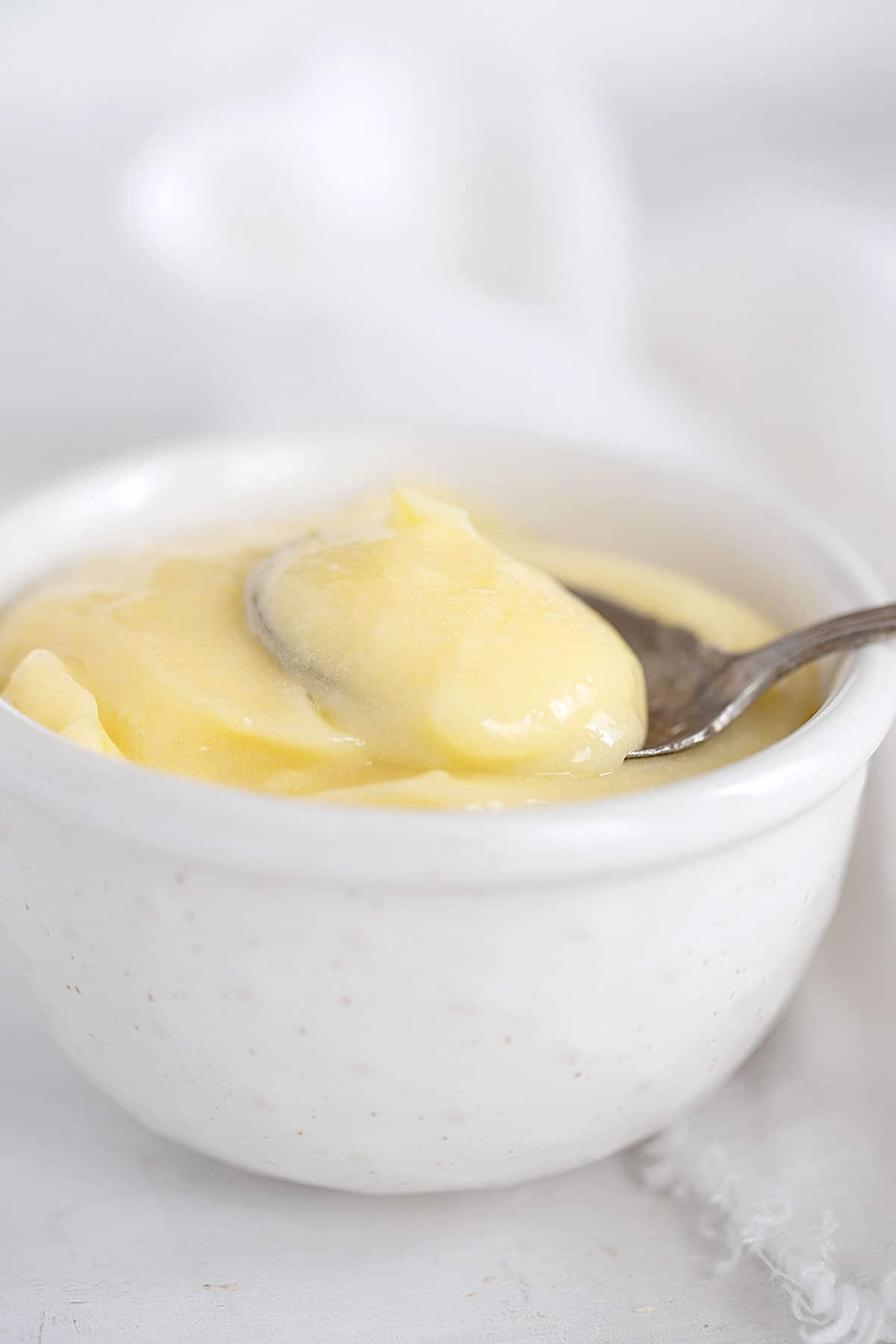
Making ahead, storing and freezing
Homemade lemon curd will keep in the refrigerator for up to 3 weeks. I like to store it in a mason jar. (You can also freeze the lemon curd in a mason jar. Just be sure to leave a little head room for expansion).
Yes, you can freeze lemon curd! Lemon curd will keep well in the refrigerator for up to 6 months. Thaw frozen lemon curd in the refrigerator.
Want to save this recipe?
Enter your email and I’ll send it to your inbox. Plus, you’ll get great new recipes from me every week!
By submitting this form, you consent to receive emails from Seasons and Suppers.
You can unsubscribe at any time.
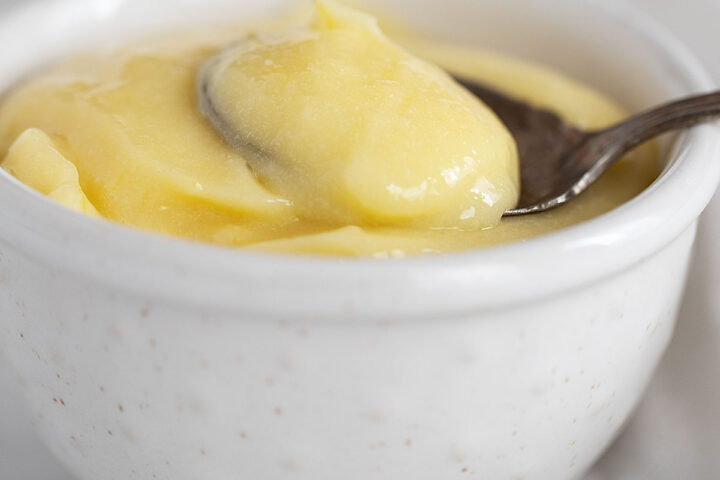
Get the Recipe: Easy Whole Egg Lemon Curd
Ingredients
- 3 large eggs, whole
- 1 cup white granulated sugar, or *see Note 1 below
- 1/2 cup lemon juice, freshly squeezed from about 2 large lemons
- 1/4 cup butter, cubed *see Note 2 below
- 1 Tablespoon lemon zest, finely grated
Instructions
- Remove the lemon zest from the lemon and measure out. Set aside. Juice the lemon(s) and strain, then measure out the required amount. Set aside.
- In a medium, heavy-bottomed saucepan (not aluminum), whisk together the eggs and sugar thoroughly. (Be sure the eggs and sugar are whisked together well before adding the lemon juice, to avoid curdling the eggs.) Add the lemon juice and whisk to combine well. Place saucepan over just below medium heat (between medium and medium low).
- Cook the mixture, whisking continuously, until the mixture thickens. Do not let it boil!! The curd will set at about 170F, which is just below the point at which it would start to simmer. Once the mixture thickens, immediately remove from the heat and stir in the lemon zest and butter, whisking until the butter is melted and the mixture is smooth.
- Transfer the mixture to a small bowl or jar. Once it stops steaming, cover with plastic wrap or lid and refrigerate up to 3 weeks. Lemon curd can also be frozen up to 6 months.
Notes
2. You can use salted or unsalted butter. If using unsalted butter, you can add a pinch of salt to the pan. If your lemon curd boiled and became lumpy, proceed to add the butter and whisk vigorously to break up the lumps as much as possible, then strain through a fine mesh strainer to remove the remaining lumps. Stir lemon zest into strained curd. You can find more tips on making lemon curd, as well as Step-by-Step photos above this recipe card.
Recipes that use lemon curd!
Hi! I’m Jennifer, a home cook schooled by trial and error and almost 40 years of getting dinner on the table! I love to share my favourite recipes, both old and new, together with lots of tips and tricks to hopefully help make your home cooking enjoyable, stress free, rewarding and of course, delicious!


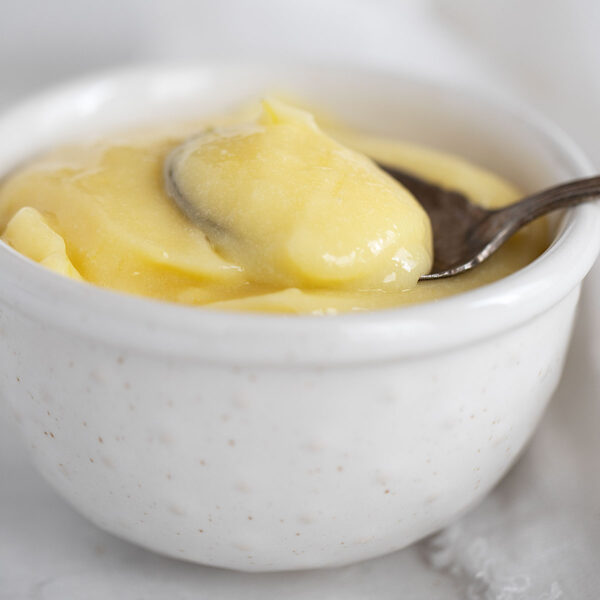
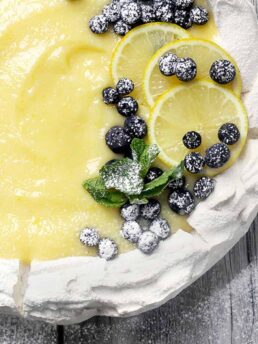

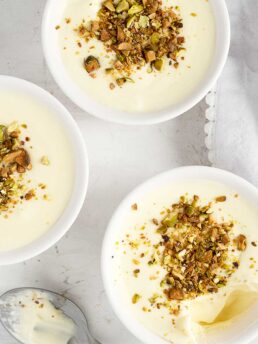

Delicious and so easy to make! I couldn’t resist eating it straight out of the jar by the spoonful.
So glad to hear, Olivia and yes, I am a jar eater, too :) Thanks!
This was my first time making lemon curd, and I can say it turned out amazing! I like how you use the whole egg rather than the yolk (separating them is a messy job hahaha). And I did 3/4 cup of sugar, since I prefer to have more lemon flavor in my curd. Just a delicious lemon curd (I had to stop myself from eating it all by itself hahaha).
Thank you so much for sharing!
so glad to hear and yes, I could happily sit and eat this with a spoon, too :) Thanks!
I haven’t tried this recipe yet – definitely will (likely this weekend). A couple of things that I like for boosting flavour – work the lemon zest into the sugar to release the oils); if I want a tarter flavour I add a bit of citric acid – for this recipe I’m thinking 1/2 to 3/4 tsp.
I have rubbed zest into sugar for other recipes, but for this curd, I prefer to add the zest at the end of cooking, as I find it provides the freshest lemon flavour. I’ve also find that simply tweaking the sugar added is an easy way to adjust the tartness. You’d want to ensure that lemon curd is not too tart, as that wouldn’t be to everyone’s taste.